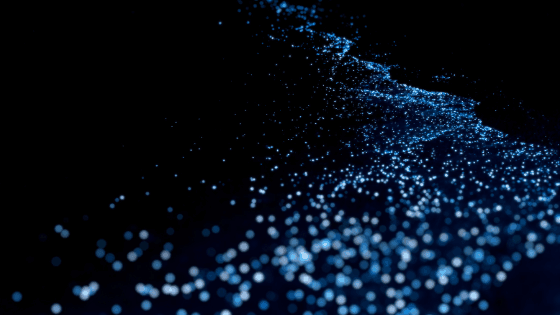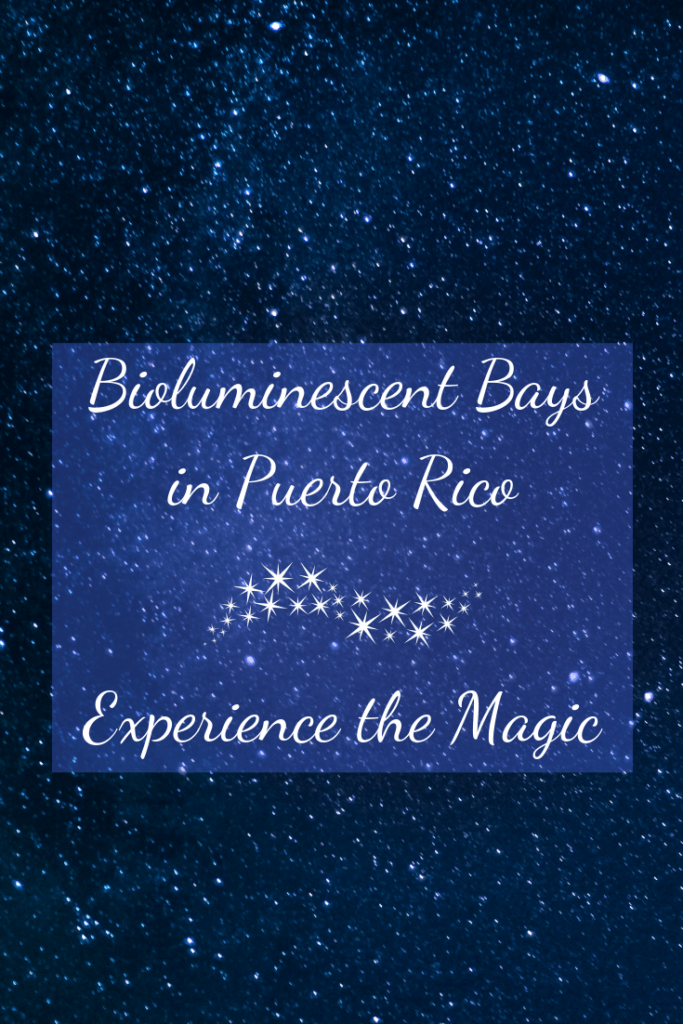Swim at La Parguera Bioluminescent Bay Puerto Rico
In this post, I will take you through how to swim at La Parguera bioluminescent bay in Puerto Rico. Swimming in a bio bay is one of the coolest things I have ever done. Top 5 actually. Pencil it into your bucket list right now so that you too will one day experience the magic.
What comes to mind when you hear bioluminescent bay? The movie Life of Pi? Read the book if you haven’t. Pictures of blue-green, glowing water? Or the movie The Beach? Thanks, Leo Dicaprio for the romantic night-swim in a bioluminescent ocean scene.
Now take all those images and put them out of your mind and expectations. In real life, bioluminescent bays do not appear like they do in the movies or photos. And that’s okay! Seeing one may not look like Hollywood magic, but I assure you it is still magic.
I swam in the La Parguera Bioluminescent Bay in Puerto Rico, and it was incredible. I’m here to tell you how to do it.
Before I get into the trip, here is what you need to know about bioluminescent bays:
– Bio bays are caused by tiny microorganisms called dinoflagellates that produce a glowing color when they are disturbed. They are found all throughout the ocean but are concentrated enough in a few places to produce a bright glow in the water.
– I am sorry to disappoint your Instagram, but you will not be able to take photos of this phenomenon. It’s not possible to photograph the glowing color of the microorganisms because they light up and go dark too quickly. Any photo you see of this has been totally photo-shopped. This is one of my favorite things about this experience, though. It is strictly yours, and there is no need to even bring a camera. You will be fully immersed in the moment.
– 5 bioluminescent bays exist in the world, 3 of which are in Puerto Rico.
- La Parguera – on the southwest side of Puerto Rico.
- Mosquito Bay – on Vieques, an island off the East coast of Puerto Rico.
- Laguna Grande – on the Northeast side of Puerto Rico in Fajardo.
- Luminous Lagoon – in Jamaica.
- Halong Bay – in Vietnam.
(You may find bioluminescence in other places at different times of the year.)
– A good visit can depend on the moon cycle. Your best bet is to go when the moon is a new moon or just a sliver. Less moonlight = a better view of the glowing water.
– Most bays will not allow you to swim in the water to prevent humans from disturbing the dinoflagellates. La Parguera Bioluminescent Bay, Puerto Rico does allow you to swim. More on this later.
– It seems best/easiest to visit a bioluminescent bay with a tour guide. I’m not sure if you can even do this on your own. A tour gives you insight that you wouldn’t learn otherwise, and tours also know where the best spots are to see the brightest water glow. When picking a tour, read the reviews. Some of the tour options in Puerto Rico sounded awful with short times in the bay, huge groups, and rude workers.
– Take the latest time slot, if possible. The darker it is, the better, and you might have fewer people out there if you are there late.
– Dress appropriately. Bring non-DEET bug spray, water-appropriate footwear, and warmer clothes for chilly nights.
– There is a possibility of jellyfish stings. Your tour guide will hopefully have vinegar water to ease the pain. And don’t panic in the water if this happens; you will be okay.
– Be prepared for disappointment. Depending on how much rain the area has had recently and other nature-related things, sometimes the glow is really low. If visibility is low and you have flexibility in your schedule, you could re-schedule your tour for a different night. As great as this blog post might be, I can’t control the dinoflagellate conditions for your adventure.

This is a less dramatized photo of a bio bay, but even this is photo-shopped. Promise!
How to Get to La Parguera, Puerto Rico
La Parguera is in the southwest corner of Puerto Rico. Getting there does require a rental car. Puerto Rico may not be a very big island, but getting around isn’t always easy.
From San Juan, where the best airport is, it is a 2 hour and 15 minute drive to La Parguera.
It’s a beautiful seaside town, and most of the things to do in the area involve being on the water. We only spent 1 night here, solely to experience the bioluminescent bay.
Swim in the La Parguera Bioluminescent Bay:
After reading a crap ton of reviews, I decided to do a tour with Aleli Eco Tours.
Like I mentioned above, there are 3 bioluminescent bays in Puerto Rico. We picked La Parguera and Aleli Eco Tours because this is the only spot in PR where you can swim in the bio bay.
We checked the moon schedule prior to our visit and scheduled our 9pm tour for the darkest night of our Puerto Rico trip. The tour can be done by kayak or in a small powerboat. It is $120 total for the boat (up to 6 people) or $60 per kayak. (These prices may have gone up.)
We had originally signed up to kayak (I’m all about being active), but Ismael, our tour guide, convinced us otherwise. He told us that many who choose to kayak end up regretting it. It is a long way to the bay (45-60 minute kayak), and apparently people get so tired by the time they get to the bio bay that they don’t enjoy it as much. We took the boat and were so grateful for his advice.
Let’s talk about swimming in a bioluminescent bay.
Should you swim in a bioluminescent bay Puerto Rico? YES. Is there some iffy-ness on whether or not humans should swim in bio bays? Yes.
Before you think my environmental and wildlife ethics are outta control, hear me out.
I try to be super conscious of my effect on the environment/wildlife while I travel, so I spent a lot of time researching if it was okay to swim in a bio bay. From what I read and what I gained from Ismael, our marine biologist, ecologist tour guide, I think that swimming in La Parguera’s bioluminescent bay is justified for now.
Ismael explained that dinoflagellates (remember, the little microorganisms that cause the water to glow) actually exist everywhere. The structure of these bio bays causes the organisms to get trapped in smaller areas. In La Parguera, it’s the mangrove trees that help trap them. Thanks to nature’s structure, enough dinoflagellates come together to show us their light.
Ismael has been studying this bio bay for decades, and he told us that it is what disturbs the structure of bio bays that causes them to dim rather than humans swimming in them.
Now that I’ve settled your environmental ethical dilemma, feel free to sign up for the tour and thank me later.
As you boat into the bay you can put your hand in the water and watch the water shimmer. You can see the water light up in the wake of the boat, and you can even see glowing fish swim and jump.
I would typically be afraid to jump into pitch black water at night, but I only remember the absolute thrill of diving into a bio bay.
Once you hit the water, you GLOW. Your skin drips with tiny glowing specks. Splashing in the water causes an eruption of light. Swimming gracefully leaves a trail of shimmering beauty. It’s hard to describe, but it looks like a million little firefly butts glowing in water. It is unlike anything you have ever seen, I promise.
I could have swam around in that magical water all night long. We swam for close to 30 minutes, and then a large jellyfish stung my boyfriend’s arm. That got us out of the water so Ismael could spray vinegar water on it.
Ismael told us stories about living in Puerto Rico on a boat for years, his studies on the bio bay organisms, Puerto Rico post-hurricane Maria, and other things. He’s a very interesting guy. The whole tour took around 2 hours, 9-11pm, and I was giddy for the rest of the night after experiencing such a phenomenon. Gah, it was so cool.
Are you ready to swim in the La Parguera Bioluminescent Bay Puerto Rico?
If you still need some convincing to visit Puerto Rico, here are 6 Photos and 6 Reasons to Visit. If you will focus on San Juan, I have a guide for that too. Or shoot me an email ([email protected]), and I’d be glad to tell you about my love for this place.

Pin this 🙂







This experience sounds really cool. Maybe I’ll get there some day! Thanks for sharing.
Thank you, Renee! I hope you do make it to a bio bay!